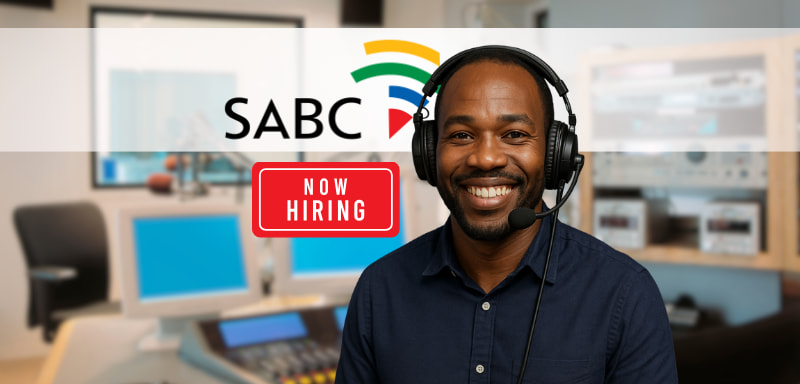Employment Tips
How to Explain Employment Gaps Clearly and Confidently
A break in your work history doesn’t have to hold you back. This guide shows how to turn employment gaps into strong talking points that impress employers.
Advertisement
Showing Growth, Not Gaps, in Your Career Journey

Employment gaps are common and nothing to be afraid of when you’re applying for jobs. The key is to explain your gaps honestly and clearly, focusing on what you did during that time or what you learned from the experience. Being upfront helps employers understand your story and see your value beyond just dates on a resume.
You don’t need to have worked every month to stay valuable. If you took time off for reasons like family, school, health, or personal growth, mention it. Showing how you stayed active through volunteering, freelancing, or training can also help fill in those gaps and keep your skills fresh.
Understanding Employment Gaps
Employment gaps happen for many reasons, and recruiters notice them during your job search. Knowing common causes and how employers see these gaps can help you explain them clearly and confidently.
You will be redirected to another website
You’ll receive messages for less than 1 week, with a maximum of 1 message per day. You can unsubscribe anytime by replying STOP. By submitting this form, I confirm that I am 18+ years old and agree to the Privacy Policy and Terms and Conditions. I also provide my signature, giving express consent to receive informational messages via automated emails, SMS, MMS text messages, and other forms of communication. Message frequency may vary as part of our good-faith effort to respond to your inquiry. Message and data rates may apply. Text STOP to cancel. I understand that my consent to receive communications is not a condition of purchase and that I may revoke my consent at any time.
Common Reasons for Employment Gaps
You might have gaps because you were searching for a new job, dealing with personal or health issues, or taking care of family. Sometimes, layoffs, company closures, or changes in the job market cause breaks in work.
Other reasons include going back to school, traveling, or focusing on personal growth. These reasons are valid and often show that you took time to reset or improve yourself. Be honest about what you were doing during your gap.
How Recruiters Perceive Employment Gaps
Recruiters typically want to understand why you had a break. They look for clear, reasonable explanations that show you stayed active or learned something useful. Gaps that seem hidden or unclear might create doubt.
Showing you used the time well—like acquiring new skills or volunteering—can make a positive impression. Being honest and straightforward helps recruiters see you as trustworthy and proactive. Avoid making excuses or leaving gaps unexplained.
How To Explain Employment Gaps Effectively

When you explain gaps in your work history, being clear and truthful helps. You should prepare ahead, share your reasons in a positive way, and connect the gap to skills or growth whenever possible.
Preparation and Honesty
Before talking about your employment gap, think about what you want to say. Be honest about why you took time off but keep it brief. You don’t need to share personal details if you’re uncomfortable.
If your break was for health, family, or learning reasons, simply say so without going into too much detail. Hiring managers respect honesty more than trying to hide gaps.
Make a short statement ready that clearly explains the gap and shows you’re ready to work again.
Framing Your Explanation Positively
How you explain the gap matters. Focus on what you did during the gap, even if it wasn’t work. You might have volunteered, taken courses, or handled personal growth.
Use simple phrases like:
- “I used this time to update my skills.”
- “I focused on finding the right job for my career.”
- “I took time for family and am now fully available.”
Avoid sounding defensive. Speak calmly and confidently about your choices.
Relating Gaps to Skill Development
Showing you built skills or stayed active during a gap is helpful. This could be learning new software, volunteering, freelancing, or caring for family while improving organization or time management.
You can list these activities on your CV or mention them in an interview. This shows gaps don’t mean inactivity or loss of skills.
| Activity | Skill Gained | How It Helps Your Job Search |
|---|---|---|
| Online Course | New software skills | Ready for tech-related tasks |
| Volunteering | Communication | Improved teamwork and leadership |
| Freelance Project | Self-discipline | Proved ability to manage projects |
Addressing Gaps in Different Application Formats
You will need to explain employment gaps clearly in your job applications and interviews. How you approach this depends on the format you are using to apply and the stage of the hiring process.
Resume and Cover Letter Strategies
In your resume, list the dates for all jobs accurately. Use a functional or combination resume format if the gap is long or important. This focuses on your skills and achievements rather than your timeline.
In your cover letter, briefly explain the gap in a positive way. For example:
- “Took time to care for a family member.”
- “Pursued further education.”
- “Focused on personal development.”
Be honest and avoid too much detail. Keep it short but clear. This shows you understand the gap and are ready to move forward.
Discussing Employment Gaps During Interviews
Prepare to talk about your gaps openly during interviews. Be honest without over-sharing. Explain the reason briefly and focus on what you learned or how you stayed active during the gap.
Use phrases like:
- “During this time, I improved my skills by…”
- “I volunteered/worked on freelance projects related to my field.”
Avoid making excuses. Show that you are motivated and ready to return to work. Practice your answer to sound confident and calm.
Additional Tips for Returning to Work
When getting back into the workforce, focus on building connections and sharpening your skills. Also, make sure to showcase any recent activities that show your growth and readiness.
Networking and Updating Skills
Networking is key when returning to work. Reach out to former colleagues, attend industry events, or join relevant professional groups online. These connections can lead to job leads or useful advice.
Updating your skills is just as important. Consider taking short courses, online classes, or workshops related to your field. This shows employers you are proactive and ready to contribute.
Keep track of relevant certifications or training you complete. Adding these to your resume or profile tells employers you are serious about staying current.
Highlighting Recent Experiences
Include any recent volunteer work, freelance projects, or part-time jobs on your resume. These experiences show you stayed active and developed new skills during your employment gap.
Be clear about what you did and what you learned. For example:
- Managed social media for a local nonprofit
- Completed a freelance writing project for a startup
This helps employers see your value and commitment. It also gives you concrete examples to discuss in interviews.
Final Thoughts
Employment gaps don’t define your career. What matters is how you explain them and how you use that time to grow. Be honest, stay positive, and show that you are ready to work and contribute again.
By being prepared and focusing on what you’ve learned, you can turn any gap into a strength. Employers appreciate honesty, and they value people who keep learning and improving.
Trending Topics

Construction and Infrastructure Jobs in South Africa: How to apply today
Thousands of construction jobs are opening in South Africa. Find out where to apply and which roles you can get — no degree required.
Keep Reading
Human Skills AI Cannot Replace: Essential Abilities for the Future
Artificial intelligence is reshaping work, but certain skills remain uniquely human. Explore how these talents give you an edge.
Keep Reading
Amazon Is Hiring: Entry-Level Jobs Paying Up to ZAR 18K/Month in South Africa
Learn how to apply for Amazon South Africa roles and earn up to ZAR 18,000/month with benefits—no degree required.
Keep ReadingYou may also like

Earn Up to R20,000: Jobs at South African Broadcasting Corporation
Explore paid jobs at South African Broadcasting Corporation. Earn up to R20,000/month in roles that offer media training and career growth.
Keep Reading
How to Ask for a Job in Person with Confidence and Respect
Make your first impression count. This guide shows how to walk in, speak up, and ask for a job face-to-face without fear.
Keep Reading
Accor Hotels Is Hiring in South Africa: Earn Up to R8,000/Month with No Experience
Discover entry-level Accor hotel jobs in South Africa with salaries up to R8,000. Learn how to apply online or in person!
Keep Reading